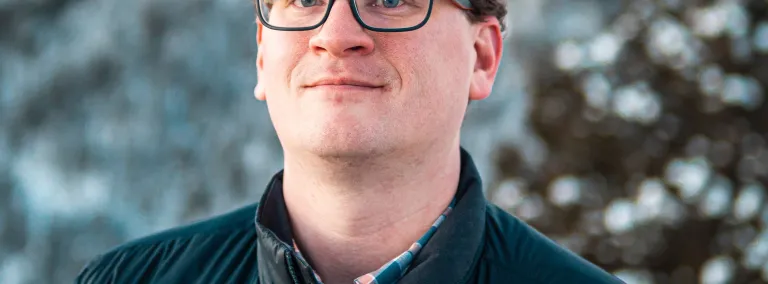Sanford Lab welcomes Douglas Tiedt
From graduate student to post-doctoral researcher to research scientist
The sheer depth of its facility makes the Sanford Underground Research Facility (Sanford Lab) a perfect place to seek answers to the most fundamental questions about our universe—whether searching for illusive dark matter or trying to better understand neutrinos. The location of the lab and the potential for discovery made it especially attractive to Douglas Tiedt, Sanford Lab’s newest research scientist.
A scientific synopsis
A local to the Black Hills area, Tiedt received his bachelor’s and master’s degree—and was the first person to earn a Ph.D. in physics with an experimental-focused dissertation— from the South Dakota School of Mines & Technology (SDSMT) in Rapid City, South Dakota. His dissertation focuses on the Large Underground Xenon (LUX) experiment, which was decommissioned in 2016 to make way for the much larger LUX-ZEPLIN (LZ).
After receiving his doctorate, Tiedt joined the LUX-ZEPLIN (LZ) dark matter experiment as a postdoctoral researcher with the University of Maryland in 2018, helping synchronize the efforts of dozens of researchers. His postdoctoral work focused on the experiment’s circulation system, and he served as the xenon coordinator for a year.
The LZ experiment, which is being assembled on the 4850 Level of Sanford Lab, will use 30 times more liquid xenon as a detection medium than did the LUX experiment.
“We are going to have to circulate 10 tons of liquid xenon so that we can constantly purify it. If it just sits stagnant, basically we will end up with a detector that doesn't work because the xenon is too dirty,” Tiedt said. “So, we have been assembling this [test circulation] system, we have filled it with xenon and have been making sure we can actually move the xenon around and control it to make sure the xenon is staying clean and pure.”
In addition to his work with the LUX and LZ experiments, Tiedt conducted studies for the Long Baseline Neutrino Experiment (LBNE), which is now referred to as the Deep Underground Neutrino Experiment (DUNE).
“I was also doing some dust studies, trying to measure how much dust was being deposited in various locations and how much electrical charge that dust was carrying,” Tiedt said.
From student to full-time researcher
Tiedt began working as a research scientist with Sanford Lab in June 2020 and will continue to work with the LZ experiment.
“Right now, I am still working on getting up to speed with Sanford Lab,” Tiedt said. “I haven't really started any research past LZ, but I am getting into the nuts and bolts of what it actually takes to make sure all of these different experiments work on-site here, the sort of behind the scenes.”
Looking back at his time working on the LZ experiment, Tiedt highlights the unique collaboration and correspondence.
“We have had a really great team, both with people who are here all the time and the non-stop stream of researchers coming in from around the world,” Tiedt said. “We get to meet lots of new people and interact with a lot of great faces and that's the experience you don't necessarily get at a lot of places.”
In this role, Tiedt also dedicates time to community outreach. He frequently gives overviews of the science taking place in the Davis Campus.” Recently, during virtual Neutrino Day: A Matter Mystery, he joined science education specialist Julie Dahl to help answer questions and educate students during the reading of “Stella Brite and the Dark Matter Mystery” by Sara Latta.
“It is really important to—not just get the experiment going—but have people understand why you are doing this,” Tiedt said. “It is one thing to convince a funding agency that it is worth building a dark matter detector, but being able to go out into the community and go ‘hey, we are building this thing, this is why it's cool and neat and useful for the community’ is much different.”
To check out Tiedt’s collaboration during Neutrino Day or any of the events and activities which took place that are still active and available, visit the Neutrino Day hub at www.neutrinoday.com.
